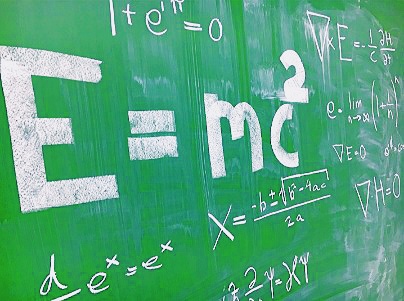What is The Study of Modern Physics?

What Is Modern Physics?
As a result of the theoretical propositions of physicists Einstein and Max Planck, new concepts of physics developed in the first three decades of the 20th century are called modern physics. After the rise of Einstein's relativity and the measurement of electromagnetic waves, this new field of study has emerged, expanding the limited horizons of classical physics.Broader than classical physics, modern physics is capable of interpreting events on a very small and very high speed scale, very close to the speed of light. 20th century physicists realized that current knowledge is not enough to explain phenomena such as photoelectric effects or blackbody radiation. Thus, various assumptions about the nature of light and matter and the interaction between them tend to be raised.
Who is The Father of Modern Physics?
Albert Einstein is called the father of modern physics. He is a 20th century scientist who came up with the most important idea. An important work of Albert Einstein is the theory of relativity and the famous equation E=mc2.He won the Nobel Prize in Physics in 1921 for discovering the laws of theoretical physics, especially photoelectric effects.
Introduction to Modern Physics
Modern physics is based on two major discoveries of the early 20th century. These are quantum and relativity mechanics. Such physics is based on what was previously known, such as Newton's laws, Maxwell's equations, thermodynamics, and classical physics.Modern physics represents the foundations and frontiers of today's physics. It is focusing on domains such as quantum mechanics; Applications of Atomic, Nuclear, Particle and Condensed Matter Physics. Mainly it includes special relativity, relativistic quantum mechanics, Dirac equation and Feynman diagram, quantum field with general relativity. Modern physics aims to cover these topics in considerable depth.
Topics in Modern Physics
The various topics that form the basis of modern physics are:- Atomic theory and atomic model
- Black-body radiation
- Franck–Hertz experiment
- Geiger–Marsden experiment (Rutherford’s experiment)
- Gravitational lensing
- Michelson–Morley experiment
- Photoelectric effect
- Quantum thermodynamics
- Radioactive phenomena in general
- Perihelion precession of Mercury
- Stern–Gerlach experiment
- Wave-particle duality
- Solid
Important Discoveries in Modern Physics
The history and development of modern physics is characterized by various experiments. Among these, we can mention those who have given us a deep understanding of the structure of matter and atoms. Some examples of these important discoveries are given below:
The history and development of modern physics is characterized by various experiments. Among these, we can mention those who have given us a deep understanding of the structure of matter and atoms. Some examples of these important discoveries are given below:
- In 1895, Wilhelm Roentgen discovered the existence of X-rays. It is an invisible type of highly penetrating radiation.
- A few years later in 1900, the German physicist Max Planck proposed that charge is caused by a magnetic field and has a measurable value. It is an integer multiple of a minimum and constant.
- In 1905, through his theory of relativity, Albert Einstein explained and showed that relativity moves at very high speeds. This speed was close to the speed of light, experiencing the passage of time and measuring distance in various ways.
- In 1913, Niels Bohr proposed that the energy levels of electrons scattered around the atomic nucleus are measured. This means, their power is given by an integer multiple of the minimum value.
- In 1924, the wave-particle duality established by physicist Louis de Broglie showed that anything can behave like a wave.
- In 1926, quantum mechanics emerged. This was the result of the work of physicists such as Werner Heisenberg and Erwin Schrödinger.
Frequently Asked Questions
What is modern physics?Answer: Modern physics is a branch of physics that deals with post-Newtonian concepts in the world of physics. It is based on two major advances of the twentieth century: relativity and quantum mechanics.
What is the photoelectric effect?
Answer: The electrical effect of light is a phenomenon where electrons are emitted from a metal surface when light of sufficient frequency occurs. The concept of photoelectric effect was documented by Henrik Hertz in 1887 and later by Leonard in 1902.
Who is the father of modern physics?
Answer: Albert Einstein is called the father of modern physics. He was a scientist of the 20th century who came up with the most important idea.
What is black body radiation?
Answer: In order to maintain thermal balance, a black object must emit radiation at the same rate as it absorbs, and so it must be a good radiator of radiation, as much as it can emit electromagnetic waves of all frequencies. The radiation emitted by the blackbody is known as blackbody radiation.
What is wien’s displacement law?
Answer: Blackbody radiation is inversely proportional to the line temperature for the peaks of different temperatures of a wavelength.
Why is modern physics such important?
Answer: The term physics describes how the applied natural world works with mathematical formulas. Chemistry is being applied mainly in physics as well as biology. Physical theory is responsible for the transformation of modern computers as well as electronics that have made advances in electronic media.














No comments:
Post a Comment